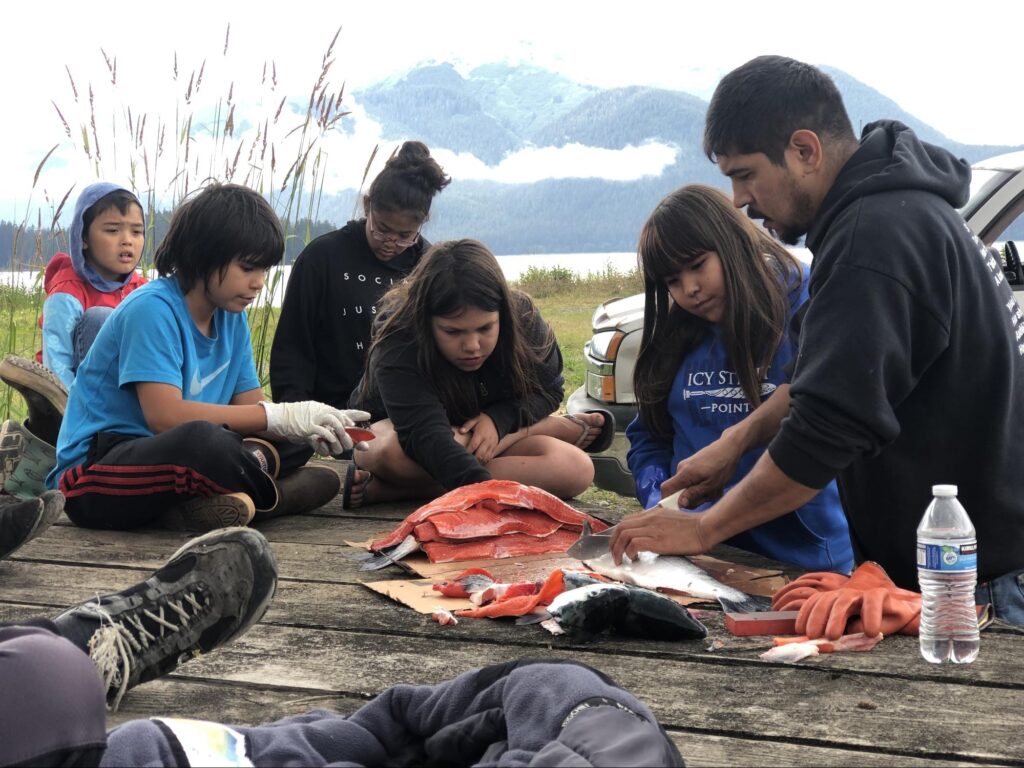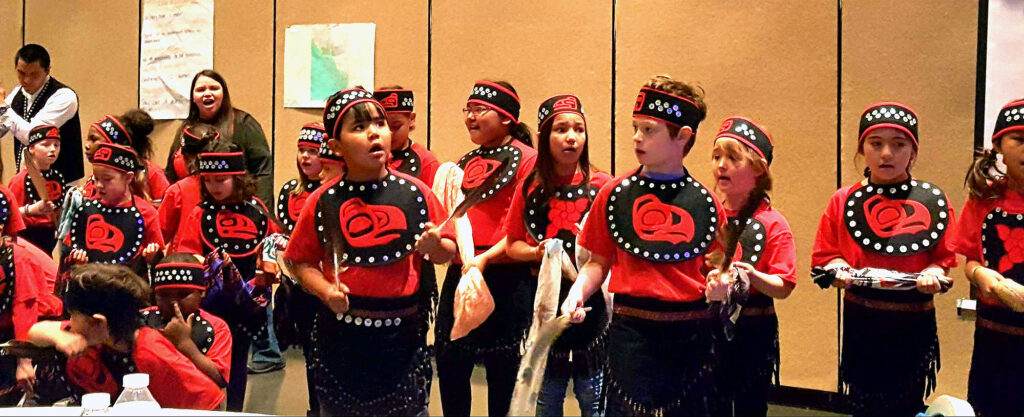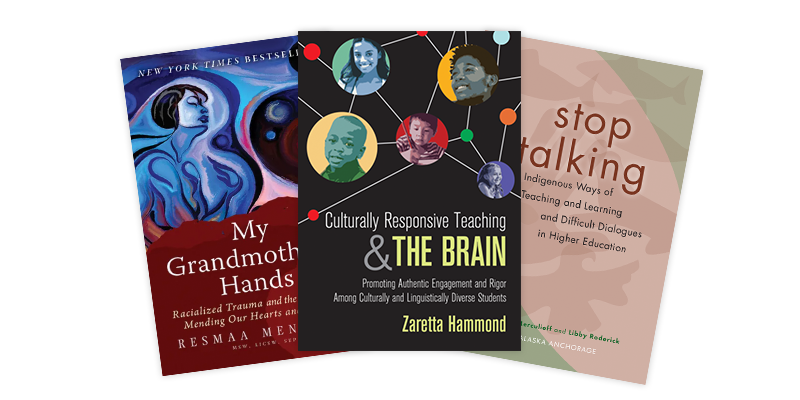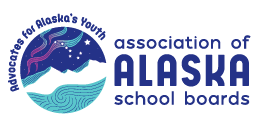Cultural Responsiveness
Culturally Responsive Education
Culturally Responsive Education links learning to place, families, and communities. Culturally responsive education makes learning relevant and accessible to our students. This can include integrating cultural practices, shifting our ways of learning and teaching, and building cultural safety into our schools and spaces for learning.

Why Does Culturally Responsive Education Matter?
What can School Districts Do to Improve Cultural Responsiveness?
How can AASB support Culturally Responsive Education in my district?
How can AASB support Culturally Responsive Education in my district?
What does Culturally Responsive Education Look Like in Practice?
Why Does Culturally Responsive Education Matter?
Research shows that culturally responsive education accelerates information processing and learning. It impacts students’ motivation and engagement, builds a sense of belonging and safety, and helps students’ problem-solving and higher-order thinking skills.
When students’ experiences and values in the home are not aligned with the values and communication in school, it can undermine students’ enthusiasm and confidence in their ability to learn.
Please note: Many communities have experienced collective and intergenerational trauma through the process of colonization. Alaska’s history helps explain the cultural trauma many Alaska Natives experience. Much of this was first experienced within the education system and disrupted intergenerational teaching approaches developed over hundreds of years.
This history and these systemic practices have lingering effects on our communities, families, and students today.

What can School Districts Do to Improve Cultural Responsiveness?
- Hire staff that reflect students’ families and community.
- Include culturally responsive strategic plan goals and policies that dedicate resources for staff to receive culturally responsive professional development.
- Elevate place-based education by bringing in local experts.
- Provide professional development and training on.
- Prepare and inform your staff about the history and people of your community.
- Build curriculum around local education/traditional calendars.
- Co-create curriculum with local experts.
- Modeling respect of cultural knowledge and cultural partners.
- Partner with community organizations and/or tribal entities to incorporate cultural values, lessons, and curriculum into your school content.
- Incorporate culturally responsive values and language into the school building and daily practices.
- Work with tribal entities to revitalize and embed Alaska Native languages.
- Establish protocols and procedures to honor, compensate, and provide gratitude to culture bearers contributing to culturally responsive education.
- Follow legal guidelines to establish strong tribal consultation practices.
How can AASB support Culturally Responsive Education in my district?
AASB offers a number of services to our members and school districts.
- Data for School-Wide Cultural Responsiveness:
- Track progress using the School Climate & Connectedness Survey
- Cultural Connectedness (6-12, staff, family)
- Family and Community Involvement (6-12)
- Family/School Partnership – School Capacity (staff, family)
- Track progress using the School Climate & Connectedness Survey
- Facilitation & Planning:
- Plan and prioritize Culturally Responsive strategies and approaches.
- Bringing together language organizations to develop a collaborative approach to language revitalization.
- Host family-centered Community Dialogues.
- Professional Learning:
- Link them to other content experts for culturally responsive education
- Provide culturally responsive family engagement training
- Policy:
- AASB can review your district’s policies and incorporate community input to make policies more culturally responsive. This can include policies on Indigenous languages, culturally responsive instruction and curriculum, professional development, and student services. See example policies here.
“If I have trauma from my ancestors, I also have resiliency passed on to me.
– Renee Culp, Haa Tóoch Lichéesh Coalition, Prevention Manager
What does Culturally Responsive Education Look Like in Practice?
Jacqueline Morris wanted her son, who is of Yup’ik and Inupiaq heritage, to be able to wear traditional regalia as he received his diploma from Service High School in 2018. Her family worked with the Native Advisory Committee to advocate for change in the Anchorage School District. After many months of hard work and advocacy, a district regulation now states that Anchorage graduates can wear traditional tribal regalia and objects of cultural significance at their graduation ceremonies.
Morris talked about watching her son cross the stage in his sealskin cap to get his high school diploma, she got goosebumps. She was just so proud, she said, and she knows her ancestors were too.
“They’re honoring their past while stepping into the future and they’re bringing their culture with them.”
Stronger Together framework? Page 31 – Cultural Responsiveness in Policy Work
Getting Started: Action Steps to Take
- Look at your family, staff, and student responses in the culturally responsive scales to develop key culturally responsive goals for your district or school.
- Host community conversations or dialogues to better understand the cultural context and priorities in each community. Use these themes to drive your culturally responsive work in your district or school.
- Understand and create healing spaces to heal from the harm of boarding schools and systemic biases experienced in education by Alaska Native and many other families.
- Ensure school staff have professional learning, coaching, and tools, to provide lesson-planning guides that help school staff to use local, place-based, and culturally specific content.
- Bring together tribes, Alaska Native non-profit organizations, or other culture bearers to coordinate language revitalization, cultural heritage programs, and approaches to cultural safety in each school.
- Get input on the curricula from tribal entities and families.Use content that builds on cultural knowledge.
- Review your budget to determine how cultural heritage, cultural identity, and language programs are supported.
Resources

- Transforming Schools: A Framework for Trauma-Engaged Schools – Chapter 9: Culturally Integration & Community Co-creation
- Stronger Together: The Power of School and Family Partnership in Alaska – Building Block 3: Cultural Responsiveness
- Bridging to the Future framework on Culturally Responsive Post-Secondary Planning with Students and Families
- Pulasaraq, Yup’ik Mental Health
- AASB and Xunaa Video
- Sealaska Heritage Institute – Culturally Responsive Lecture series (Sep. 2020):
- Shgen George, “My Life in Education as a Native Teacher: A personal look at culturally responsive education.”
- History of Alaska Native Education by Chookangee Tláa (Mischa Plunkett Jackson)
- Culturally Responsive Teaching & The Brain, Promoting Authentic Engagement and Rigor Among Culturally and Linguistically Diverse Students by Zaretta Hammond
- Trauma Engaged Framework: Story of Sam Schimmel
- The Indigenous Storywork
- Stop Talking – Indigenous Ways of Teaching and Learning and Difficult Dialogues in Higher Education, Ilarion (Larry) Merculieff and Libby Roderick (PDF)
- My Grandmother’s Hands, Racialized Trauma and the Pathway to Mending Our Hearts and Bodies, Resmaa Menakem
- AASB Language and Community Story Book Slam https://read.bookcreator.com/library/-MmdWqYx4VjISHuDq4cC
